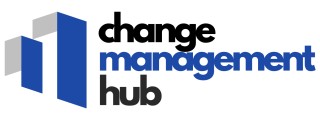
Defining Product Job Families
Exploring the Framework of Product Job Families
In the realm of change management, understanding the structure of product job families is crucial for aligning organizational goals with employee roles. A job family refers to a group of jobs that involve similar work and require similar training, skills, knowledge, and expertise. This framework helps organizations streamline their job architecture and create a clear path for career development.
Product job families are particularly significant in organizations that focus on product management. They encompass various roles, from product managers to team members involved in product development and management. Each role within a job family contributes to the overarching product vision and requires specific competencies to drive success.
Defining Roles and Responsibilities
Within a product job family, roles are defined by specific job descriptions that outline the necessary skills and responsibilities. This clarity ensures that employees understand their contributions to the company's objectives and how their performance is measured. By establishing a competency matrix, organizations can identify the core competencies required for each role, facilitating effective performance management and succession planning.
Moreover, aligning job families with core competencies allows for a more structured approach to career paths and employee growth. This alignment not only enhances individual performance but also supports the organization's overall change management strategy.
For more insights on understanding common and special causes in change management, you can explore this resource.
Core Competencies: The Backbone of Change
Building the Foundation: Essential Competencies for Successful Change
In any organization, core competencies act as the backbone of successful change management. These competencies are the skills and abilities that product managers, employees, and team members must possess to navigate the complexities of transformation effectively. Understanding what these core competencies entail is crucial for fostering development and enhancing performance across all levels of a company. At the heart of these competencies is an emphasis on a competency-based approach to job architecture. This involves establishing a clear competency matrix, which outlines the specific skills and abilities required for each job within a product job family. These matrices help define career paths and facilitate career development by providing a transparent framework for employees to understand what is expected of them and how they can grow within their roles. Inclusion of these competencies in job descriptions ensures that staff are not only aware of their roles but also align with the organization’s strategic goals. This alignment supports a cohesive product vision and encourages cross-functional collaboration among team members, thereby enhancing the overall performance management system within the organization. Another critical aspect is succession planning. By identifying and nurturing core competencies among employees, organizations can ensure that they are prepared for future leadership roles. This proactive approach to management guarantees sustained growth and adaptability in an ever-evolving business environment. For a deeper understanding of how these competencies integrate with technology and processes in specific sectors like nursing informatics, check out integrating people, technology, and processes.Aligning Job Families with Core Competencies
Integrating Job Families with Essential Skills
The integration of job families with core competencies is an influential approach to harnessing the potential of employees within an organization. The process helps in delineating clear career growth trajectories, aligning roles with the organization's goals, and enhancing overall performance. A well-defined job architecture ensures that job descriptions are aligned with the core competencies required at various levels of the organization. This alignment is crucial not just for the clarity of roles but also for the systematic development of employee skills and performance management.- Competency Matrix: By creating a competency matrix for each product job family, organizations can map out specific skills needed at different levels. This matrix serves as a blueprint for identifying competency gaps and setting the stage for targeted development efforts.
- Roles and Responsibilities: Clearly defining roles within each job family can help product managers understand their responsibilities in the context of the core competency framework. This clarity fosters a cohesive team environment and encourages cross-functional collaboration.
- Career Development: Aligning job families with core competencies supports succession planning and career development. Employees can visualize their career paths and understand how their roles evolve with the organization's needs.
- Performance Evaluation: Aligning individual performance with organizational goals is simplified when job families are well integrated with core competencies. This integration assists management in evaluating team members effectively, fostering a culture of continuous improvement.
The Role of Leadership in Change Management
Leadership's Influence on Change Dynamics
In the realm of change management, leadership plays a pivotal role in steering the organization through transitions. Leaders are not just figureheads; they are the architects of change, shaping the job architecture and guiding employees through the complexities of transformation. Their ability to align product job families with core competencies is crucial for the success of any change initiative.
Effective leaders understand the importance of a competency matrix in identifying the skills and roles necessary for successful change. They leverage this tool to ensure that team members are not only aware of their roles but are also equipped with the necessary skills to fulfill them. This involves a deep understanding of the job descriptions and the performance management systems in place within the organization.
Moreover, leadership is responsible for fostering a culture of continuous development and growth. By promoting career development and succession planning, leaders ensure that employees are prepared for future roles within the company. This forward-thinking approach is essential for maintaining a robust pipeline of talent ready to tackle new challenges.
Leaders also play a critical role in performance management by setting clear expectations and providing feedback. This not only enhances employee performance but also aligns individual goals with the broader product vision of the company. By doing so, leaders help create a cohesive and motivated workforce ready to embrace change.
Ultimately, the role of leadership in change management is to create an environment where employees feel supported and empowered. By focusing on core competencies and aligning them with the organization's goals, leaders can drive successful change initiatives that benefit both the company and its employees.
Training and Development for Change Readiness
Preparing for Change Through Continuous Learning
In any organization, developing a strong foundation for change readiness is pivotal. Training, which is also intertwined with career development and competency building, acts as the cornerstone for successful change management. This process involves equipping employees with the necessary skills and competencies to navigate the changing landscape effectively. Here's how organizations can ensure they are ready for change:- Competency Based Training: By customizing training programs to address specific core competencies needed within job families, organizations can ensure that employees are well-prepared for their roles. This involves mapping the competencies required within each job family to create a robust training architecture.
- Role-Specific Skills: It’s crucial for training programs to be aligned with the specific roles and job descriptions in order for team members to effectively execute their responsibilities. This alignment allows for targeted learning that supports the overall performance management strategy.
- Career Development and Growth: A competency matrix often illustrates the skills employees need to advance their careers. Offering training that aligns with these matrices not only supports individual employee growth but also enhances the organization's capability by fostering a culture of learning and development.
- Cross-Functional Training: Encouraging cross-functional learning ensures that team members acquire a holistic understanding of the organization’s goals and product vision. This approach supports product managers and employees alike in understanding how different roles and departments intersect and contribute to the change process.
Measuring Success in Change Management
Evaluating the Effectiveness of Change Management Initiatives
In the dynamic landscape of change management, measuring success can often be a challenging endeavor. However, with a structured approach, organizations can ensure that their change initiatives yield the desired outcomes. The importance of aligning job families with core competencies can't be overstated, as it directly impacts employee performance and growth.
One essential element is to identify the key competencies necessary for each job family. Organizations typically develop a competency matrix, which serves as a framework to assess the skills of employees across different levels. This matrix can be instrumental in tracking changes in performance and identifying areas that require further development.
Here are several methods to effectively measure success in change management:
- Performance Management: Systematic performance evaluations help in understanding how well team members adapt to new changes. By leveraging competency-based assessments, organizations can gauge improvements in specific areas and make informed decisions on necessary training.
- Feedback Mechanisms: Regularly soliciting feedback from employees and product managers provides insights into the efficacy of change initiatives. Such feedback should be critically analyzed for continuous improvements.
- Career Path Growth: Monitoring career paths through career development frameworks ensures employees are progressing and acquiring new competencies as needed. This progression is vital for succession planning within the organization.
- Cross-Functional Team Success: Evaluating the performance and integration of cross-functional teams involved in implementing change is vital. Such evaluation assesses whether the core competencies are effectively orchestrated within product management or related roles.
A comprehensive approach to evaluating success in change management enables organizations to refine their job architecture, adjust product visions, and foster a culture where change becomes an opportunity for growth.













